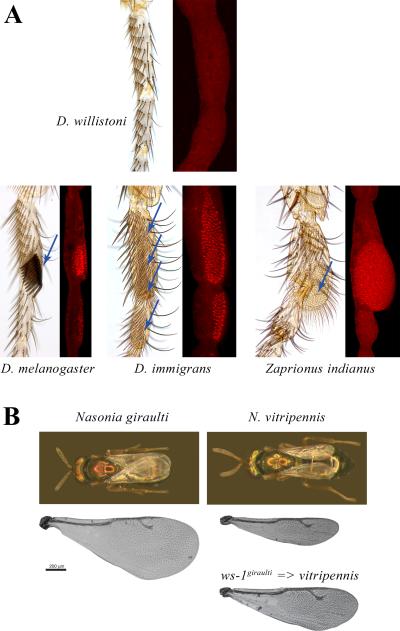Figure 3.
Changes in Dmrt genes are responsible for the origin and evolution of sex-specific traits. Only males are shown for all species. A. In Drosophila and related genera, the first pair of legs is sexually monomorphic in the ancestral condition, illustrated here by D. willistoni, and dsx is not expressed during the critical stages of pupal leg development. Three different lineages of Drosophilidae have independently evolved new male-specific structures: sex comb in D. melanogaster and its relatives, a long brush of tightly packed bristles in the immigrans species group, and a tarsal bulge with a round brush of fine hairs in the genus Zaprionus (arrows in Fig. 2 A). In each case, the novel morphology is associated with a novel expression domain of dsx (Dsx antibody staining in red) (Modified from [34]). B. In the wasp Nasonia, male-specific wing reduction is much more pronounced in N. vitripennis than in N. giraulti. Introgression of the ws-1 genomic region, which spans the dsx locus, from N. giraulti into N. vitripennis is sufficient to increase wing size [78] (modified from [78] with permission).

